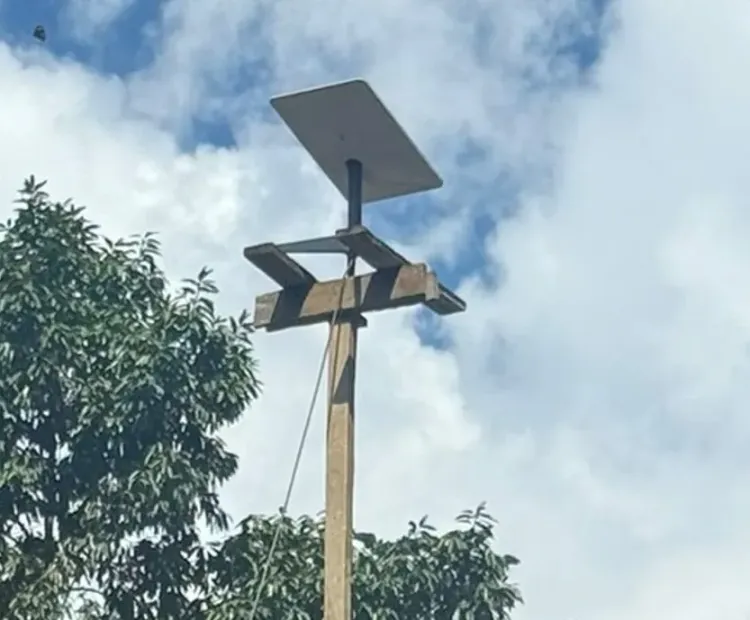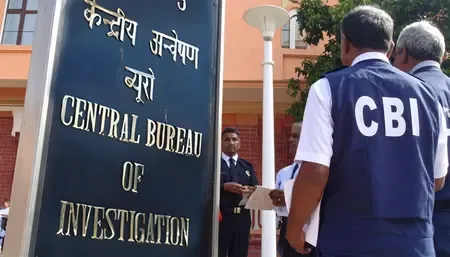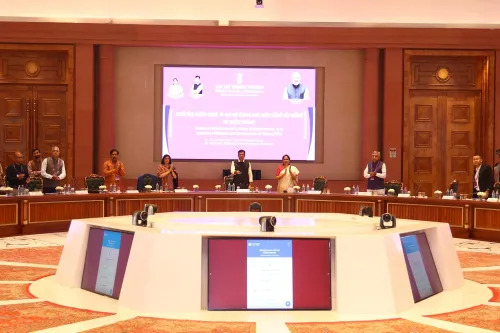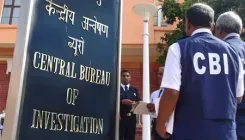Has India's Space Regulator Approved Musk's Starlink Services for 5 Years?

Synopsis
Key Takeaways
- IN-SPACe approves Starlink for 5 years
- Starlink constellation includes 4,408 satellites
- Service aimed at improving internet access
- Starlink must secure spectrum and infrastructure
- Regulatory compliance is essential for rollout
New Delhi, July 9 (NationPress) The Indian National Space Promotion and Authorisation Centre (IN-SPACe) has officially approved Elon Musk’s Starlink to operate in India for the next five years. This milestone marks the removal of the last regulatory barrier for the rollout of affordable satellite broadband services in the country.
According to IN-SPACe, authorization was granted to Starlink Satellite Communications Private Limited, based in New Delhi, to facilitate the establishment of a Low Earth Orbit (LEO) satellite constellation known as Starlink Gen1.
The Starlink Gen1 Constellation comprises 4,408 satellites orbiting Earth at altitudes between 540 and 570 km, offering an impressive throughput capacity of around 600 Gbps across India.
This authorization permits SSCPL to deliver satellite communication services throughout the country.
As per IN-SPACe's statement, the authorization is valid for five years from the date of approval or until the operational life of the Gen1 constellation concludes—whichever comes first.
Next, Starlink must secure spectrum from the government and build the necessary ground infrastructure to initiate its services.
The Department of Telecommunications (DoT) is poised to provide trial spectrum to the US-based firm to facilitate compliance with security requirements.
Starlink has also entered into its first commercial contracts with VSAT providers in India, who specialize in satellite-based internet and communication solutions, particularly for areas lacking terrestrial connectivity.
The anticipated affordable satellite internet service from Starlink is expected to launch in the coming months.
However, IN-SPACe emphasized that the rollout of this budget-friendly internet service is contingent upon adherence to regulatory guidelines and obtaining the necessary clearances and licenses from relevant government departments.
Union Communications Minister Jyotiraditya Scindia stated last week that all required diligence has been performed on their part for SpaceX’s Starlink to enter the Indian market, and once the necessary regulatory and licensing approvals are secured, the service can be launched at their discretion.
The space regulator had previously issued a draft Letter of Intent (LOI) to the company.
Starlink delivers internet services through a network of satellites orbiting the planet and operates the largest constellation in existence, boasting over 6,750 satellites.
Currently, Starlink services are available in several nations, including Mongolia, Japan, the Philippines, Malaysia, Indonesia, Jordan, Yemen, Azerbaijan, and Sri Lanka.
In competition, Amazon’s Project Kuiper, a rival of Starlink, is also awaiting the necessary regulatory approvals from both DoT and IN-SPACe as it plans a large-scale satellite communication rollout in India.









